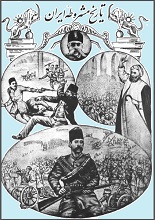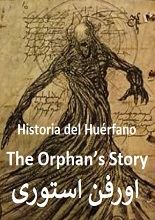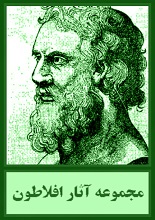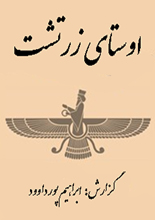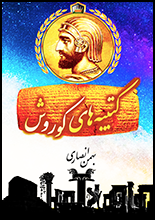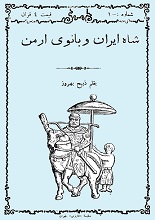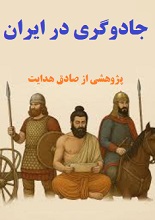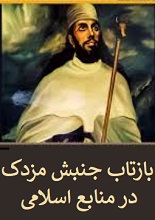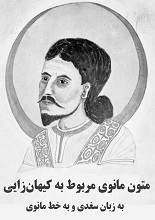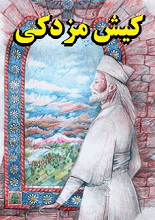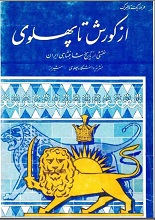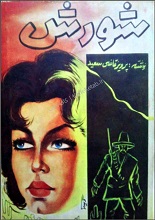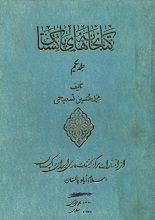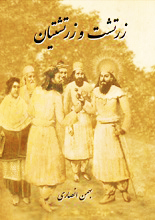The book In Search of Lost Time – Volume 1: Swann’s Way is one of the most significant and intricate works of 20th-century literature. This masterpiece by the French author Marcel Proust stands out not only for its rich content and unique writing style but also for its profound influence on world literature, earning it a place among the masterpieces of modern literature.
The first volume, Swann’s Way, was published in 1913 and marks the beginning of this monumental novel, which spans seven volumes. The book is divided into three main parts: “Combray,” “Swann in Love,” and “Place-Names: The Name.” Each part carefully and artfully explores different aspects of life, love, memory, and the passage of time.
کتاب «در جستجوی زمان از دست رفته – جلد اول: طرف خانه سوان» یکی از مهمترین و پیچیدهترین آثار ادبی قرن بیستم به شمار میرود. این اثر بینظیر از مارسل پروست، نویسندهی فرانسوی، نه تنها به واسطهی محتوای غنی و سبک نگارش خاصش، بلکه به دلیل تاثیر عمیقی که بر ادبیات جهان گذاشته، همواره در زمرهی شاهکارهای ادبیات مدرن محسوب میشود.
جلد اول این مجموعه، با عنوان «طرف خانه سوان» (Swann’s Way)، در سال ۱۹۱۳ منتشر شد و آغازگر این رمان عظیم است که در هفت جلد منتشر شده است. این کتاب شامل سه بخش اصلی به نامهای “Combray”، “Swann in Love” و “Place-Names: The Name” است. هر یک از این بخشها با دقت و ظرافتی فوقالعاده، ابعاد گوناگون زندگی، عشق، خاطرات و گذر زمان را واکاوی میکند.
Summary of the Book
Swann’s Way introduces us to the narrator’s memories, who is widely believed to closely resemble Proust himself. The narrative begins with vivid depictions of the narrator’s sleepless nights and gradually delves into his childhood in the town of Combray and his family’s connections with the Swann family. The “Combray” section beautifully describes the landscapes and atmosphere of the narrator’s childhood. Then comes “Swann in Love,” a crucial part of the book, focusing on Swann’s deep and complex love for a woman named Odette. This love, initially full of fascination and passion, eventually turns into an all-consuming jealousy and obsession that leads Swann to great suffering and doubt.
In the final section, “Place-Names: The Name,” the narrator reflects on the memories of specific places that have become deeply ingrained in his mind. This section also sets the stage for the philosophical and psychological themes that are further explored in the subsequent volumes.
«طرف خانه سوان» ما را با داستانی آمیخته به خاطرات راوی، که بسیاری معتقدند شباهت زیادی به خود پروست دارد، مواجه میکند. داستان با توصیف شبهای بیخوابی راوی آغاز میشود و به تدریج به شرح دوران کودکی او در شهر کومبره و ارتباط خانوادگیاش با خانوادهی سوان میپردازد. بخش “Combray” به توصیف مناظر و حس و حال کودکی اختصاص دارد. در ادامه، بخش “Swann in Love” یکی از مهمترین بخشهای کتاب به شمار میرود و روایتگر عشق عمیق و پیچیدهی سوان به زنی به نام ادت (Odette) است. این عشق که در ابتدا برای سوان دلنشین و اسرارآمیز به نظر میرسد، به تدریج به نوعی وابستگی آزاردهنده تبدیل میشود و او را به کام حسادت و تردید فرو میبرد.
در بخش پایانی، یعنی “Place-Names: The Name”، راوی به بازتاب خاطرات و مکانهای خاصی که در ذهنش نقش بستهاند میپردازد. این بخش، پیشدرآمدی است بر موضوعات فلسفی و روانشناختی عمیقتر که در جلدهای بعدی گسترش پیدا میکنند.
Analysis of Proust’s Writing Style and Language
Proust’s prose in this book is renowned for its poetic and detailed nature. His sentences are long, winding, and filled with precise and delicate descriptions. While his style may seem challenging at first, it soon becomes mesmerizing and even addictive for the reader. Proust masterfully recreates memories and constructs vivid mental landscapes by using metaphors, sensory images, and artistic comparisons that draw the reader deeper into the characters’ inner worlds.
پروست در این کتاب از نثری شاعرانه و پر جزئیات استفاده میکند. جملات او بلند، پر پیچ و خم و آکنده از توصیفهای دقیق و ظریف هستند. این سبک نگارش، که در ابتدا ممکن است برای برخی خوانندگان دشوار به نظر برسد، به تدریج لذتبخش و حتی اعتیادآور میشود. پروست در بازآفرینی خاطرات و خلق فضای ذهنی راوی، استادانه عمل میکند. او از استعارهها، تصاویر حسی و مقایسههای هنری بهره میگیرد تا خواننده را عمیقتر به درون احساسات و ذهنیت شخصیتهایش وارد کند
Key Themes and Concepts
The book is brimming with philosophical and psychological themes, including:
- The Passage of Time: The central theme of the series, time and its effects on memory and identity, is intricately explored as Proust delves into how past and present intermingle.
- Love and Jealousy: Swann’s passionate love for Odette becomes a double-edged sword, turning into a source of doubt and torment—a theme that resonates powerfully in “Swann in Love.”
- Memory and Places: The narrator’s memories are intertwined with the places and spaces he inhabits. Locations like Combray and Balbec are more than just settings; they are part of the narrator’s identity.
- Art and Aesthetics: Swann’s love for art and music, coupled with Proust’s rich descriptions of paintings, music, and architecture, highlights the importance of beauty and artistic creation throughout the novel.
کتاب سرشار از مضامین فلسفی و روانشناختی است که از آن جمله میتوان به موارد زیر اشاره کرد:
گذشت زمان: عنوان کلی این مجموعه و مضمون اصلی آن، “زمان” و تاثیر آن بر خاطرات و هویت انسان است. پروست با دقت و ظرافت، گذر زمان و تاثیرش بر احساسات و نگرشهای انسان را به تصویر میکشد.
عشق و حسادت: عشق پرشور سوان به ادت، نمونهای از عشقی است که در عین زیبایی و شور، به شک و تردید و رنج بدل میشود. این موضوع، بهویژه در بخش “Swann in Love” به وضوح قابل مشاهده است.
خاطرات و مکانها: خاطرات راوی به مکانها و فضاهای خاص گره خوردهاند. کومبره، بالبک و دیگر مکانهای روایتشده، نهتنها پسزمینهی داستان، بلکه بخشی از هویت راوی هستند.
هنر و زیباییشناسی: علاقهی سوان به هنر و موسیقی، در کنار توصیفهای پروست از تابلوها، موسیقیها و سبکهای معماری، جایگاه والای هنر در این اثر را نشان میدهد.
Characters and Psychological Depth
One of the hallmarks of this novel is its profound and psychological portrayal of characters. Proust carefully dissects the thoughts and feelings of his characters, creating a rich and complex world:
- The Narrator (Unnamed): Sensitive and introspective, the narrator—often seen as Proust’s alter ego—painstakingly examines himself and others.
- Swann: Swann is a cultivated and refined man who becomes ensnared in a consuming love affair. His relationship with Odette is a brilliant psychological study of love, obsession, and vulnerability.
- Odette: Mysterious and sometimes manipulative, Odette’s portrayal shifts constantly in Swann’s eyes, reflecting the instability of desire and perception.
یکی از ویژگیهای برجستهی این رمان، پرداخت دقیق و روانشناختی به شخصیتهاست. پروست با موشکافی دقیق ذهن و احساسات آنها، دنیایی زنده و پیچیده میسازد:
- راوی (راوی بینام): راوی که بسیاری او را نمایندهی خود پروست میدانند، شخصیتی حساس، خیالپرداز و عمیق است. او با صداقتی بیرحمانه به واکاوی خود و دیگران میپردازد.
- سوان: سوان، مردی است فرهیخته و خوشذوق که اسیر عشقی طاقتفرسا میشود. تحلیل رابطهی او با ادت، بخشی از درخشانترین تحلیلهای روانشناختی رمان است.
- ادت: زنی مرموز و گاه فریبکار، که نگاه سوان به او دائماً در حال تغییر است. او برای سوان، گاه الههای دستنیافتنی و گاه زنی خیانتکار و دروغگو جلوه میکند.
Significance and Global Impact
As the first volume of Proust’s magnum opus, Swann’s Way had a profound impact on modern literature. Its innovative style and philosophical depth have inspired writers such as James Joyce, William Faulkner, and Samuel Beckett. Many consider it on par with classic works like Tolstoy’s War and Peace and Dostoevsky’s The Brothers Karamazov.
«طرف خانه سوان» بهعنوان نخستین جلد این مجموعهی عظیم، تاثیر قابل توجهی بر ادبیات مدرن جهان گذاشته است. این اثر، با سبک خاص و نگاه فلسفیاش، الهامبخش نویسندگان بزرگی چون جیمز جویس، ویلیام فاکنر و ساموئل بکت بوده است. اهمیت این کتاب به حدی است که بسیاری آن را با آثار کلاسیکی چون “جنگ و صلح” تولستوی و “برادران کارامازوف” داستایفسکی مقایسه میکنند.
دانلود چند رمان دیگر:
همیشه شوهر
بوسه پیش از مرگ
یک داستان کثیف
Critical Review: Strengths and Weaknesses
Strengths:
- Unique Writing Style: Proust’s musical, flowing prose brings an unparalleled pleasure to reading.
- Philosophical and Psychological Depth: Beyond being a love story or social commentary, it delves into the deep realms of philosophy and psychology.
- Poetic Descriptions: Proust’s masterful descriptions of places, moods, and memories are extraordinarily evocative.
Weaknesses (for some readers):
- Slow Narrative Pace: The long, winding narrative may feel overly slow to some modern readers.
- Complexity and Length: The book’s complexity and sheer size can be mentally demanding.
Download IN SEARCH OF LOST TIME
In Search of Lost Time – Volume 1: Swann’s Way is not just an introduction to Proust’s epic, but a literary journey in itself—one that every serious reader of literature should experience. It invites readers to explore how our memories and emotions shape our identities and how the flow of time weaves them together.

برای دانلود این کتاب، ابتدا باید عضو سایت بشوید.
پس از عضویت، لینک دانلود این کتاب و همهی کتابهای سایت برای شما فعال میشوند.
(قبلا عضو شدهاید؟ وارد شوید)


